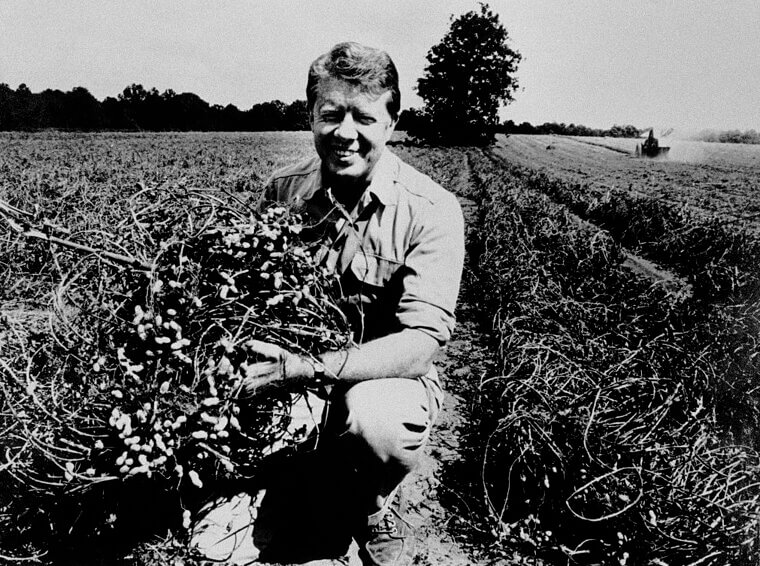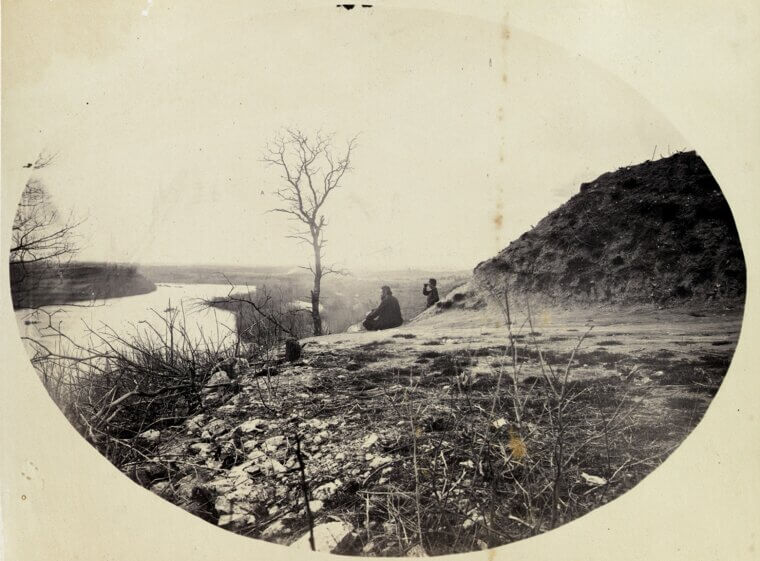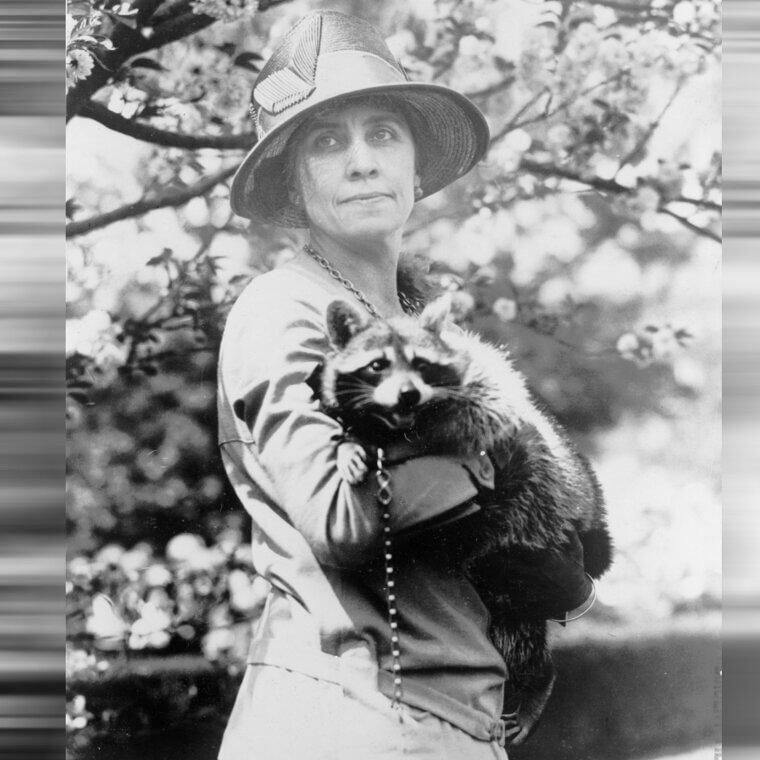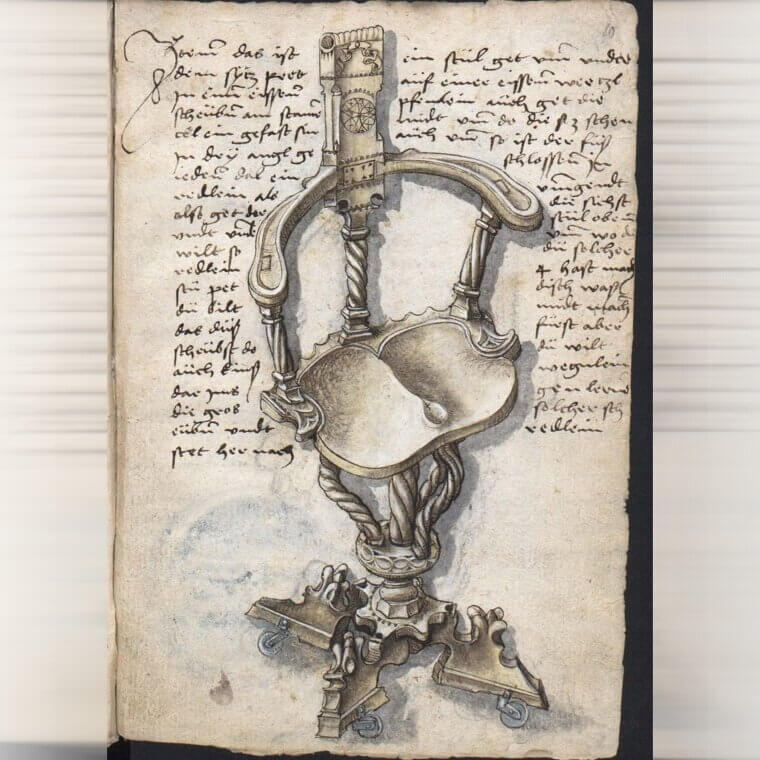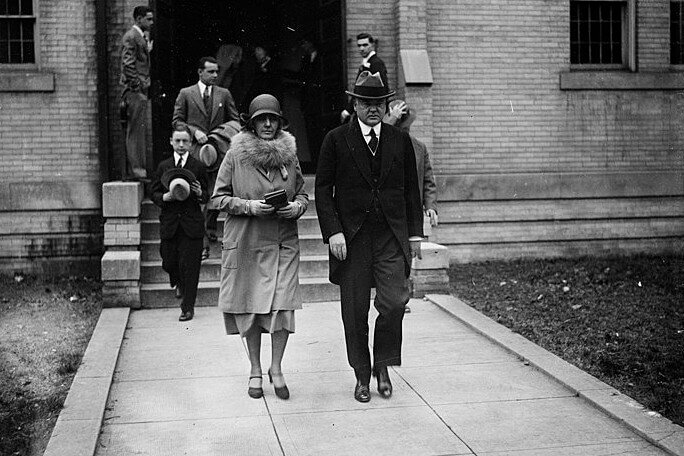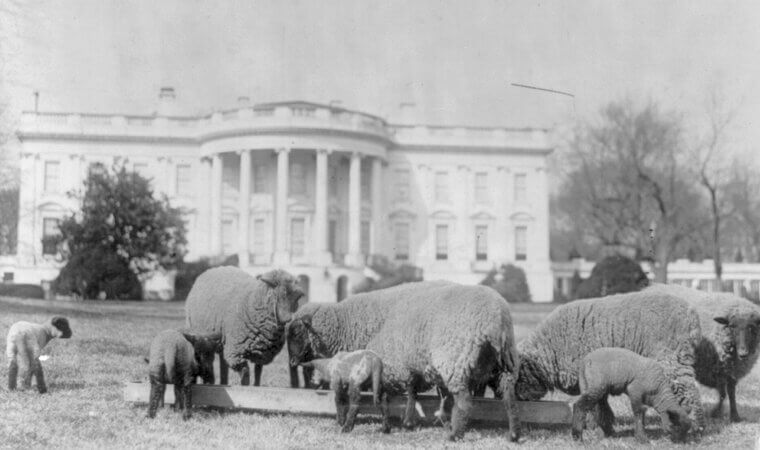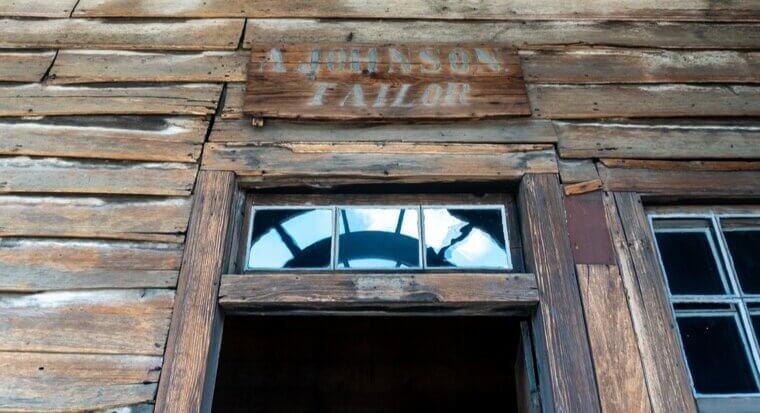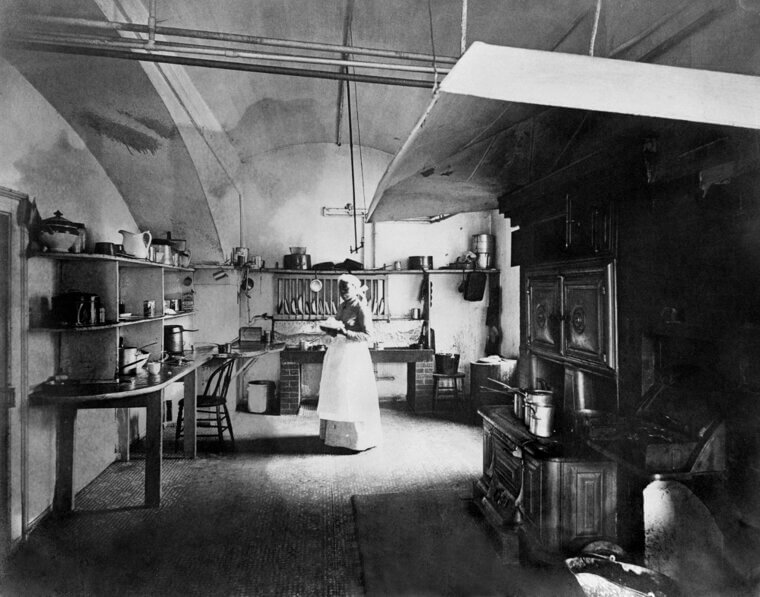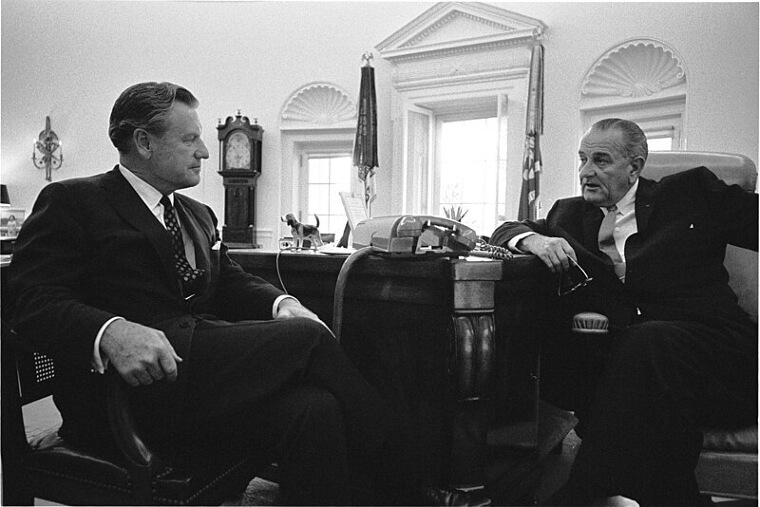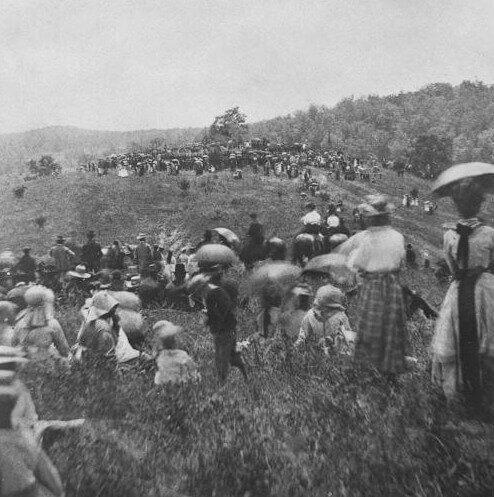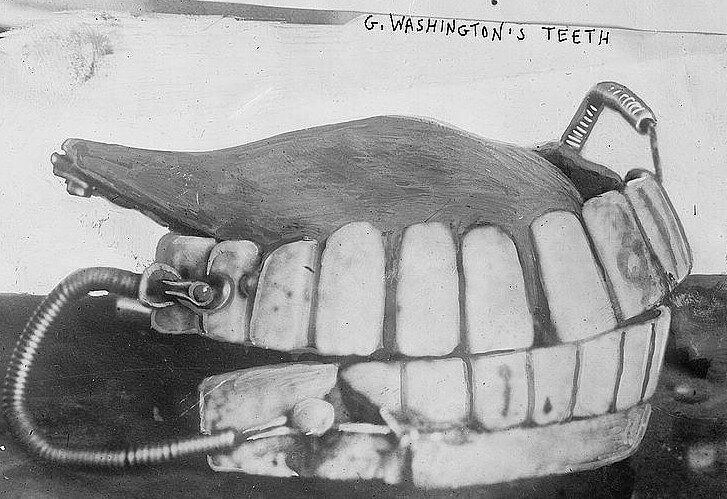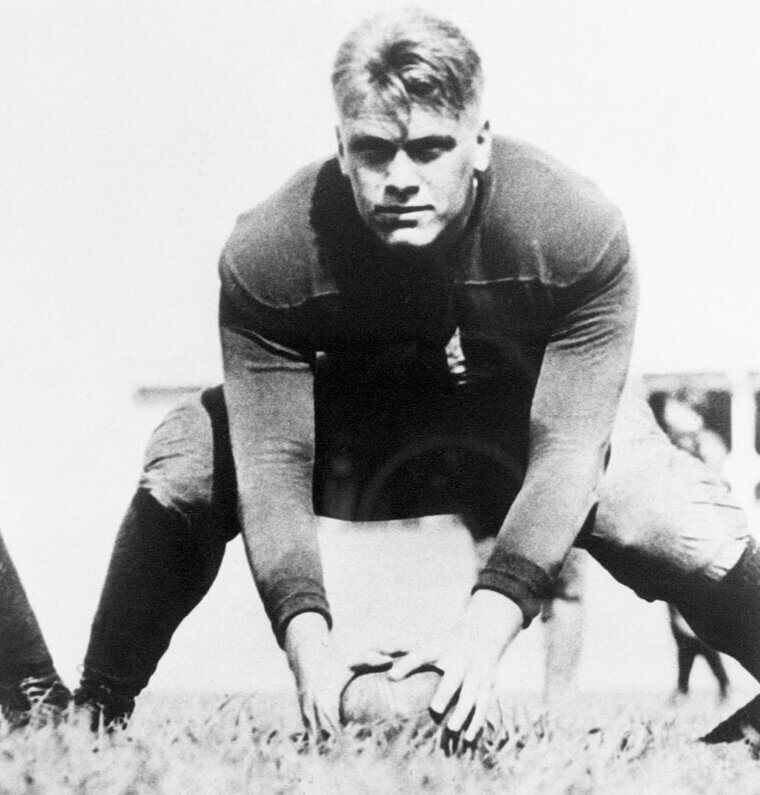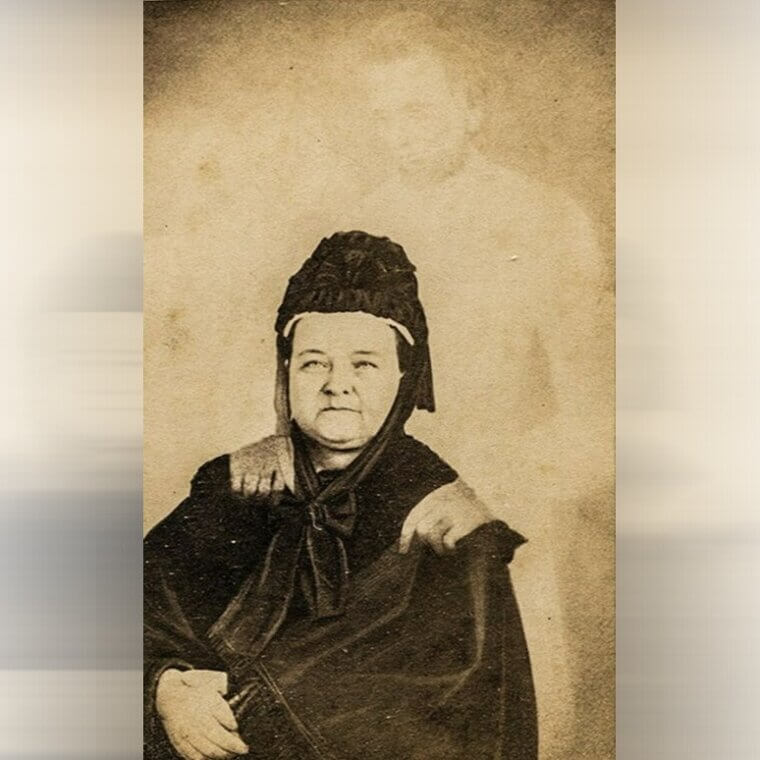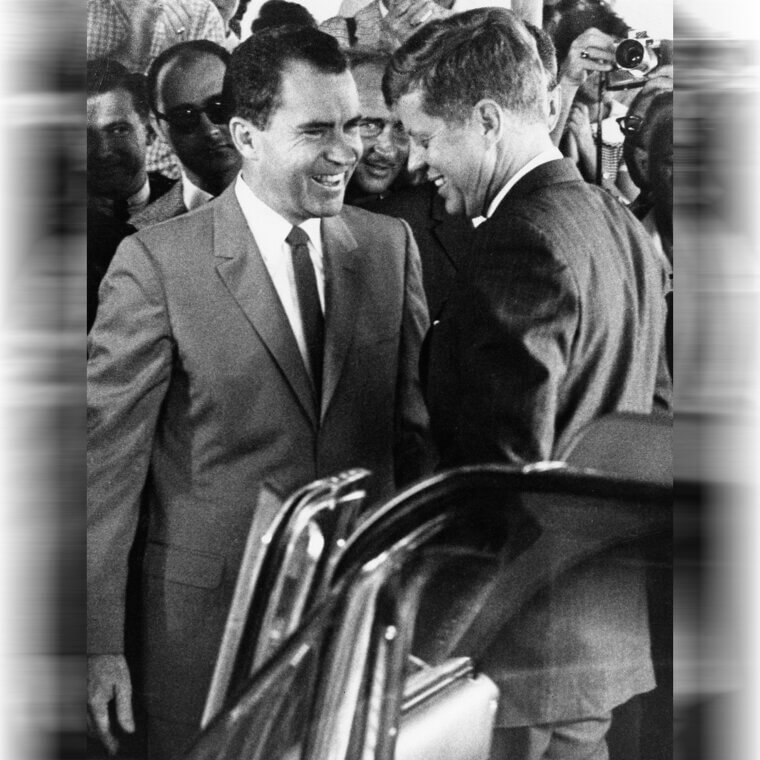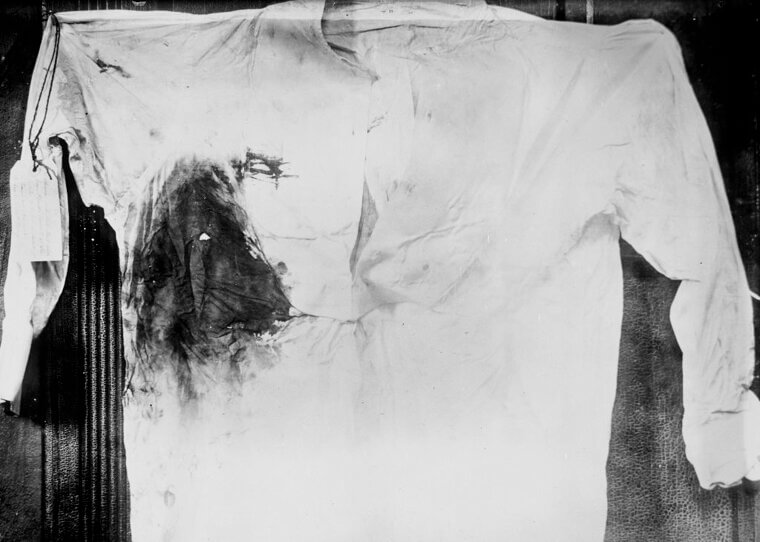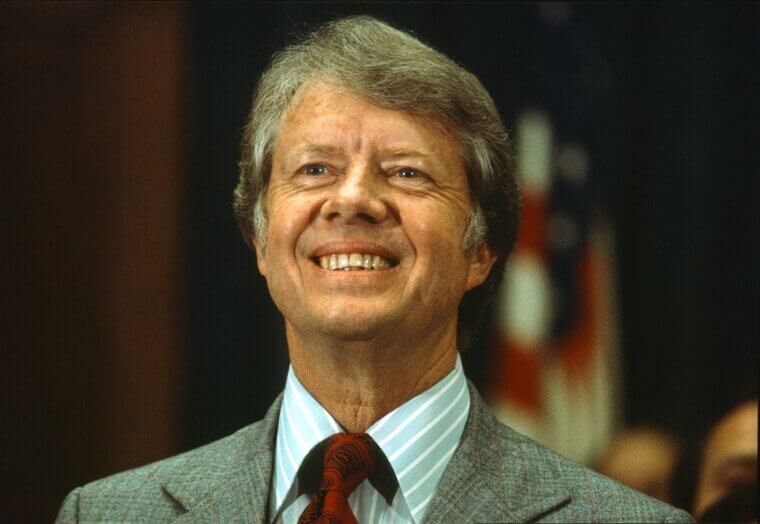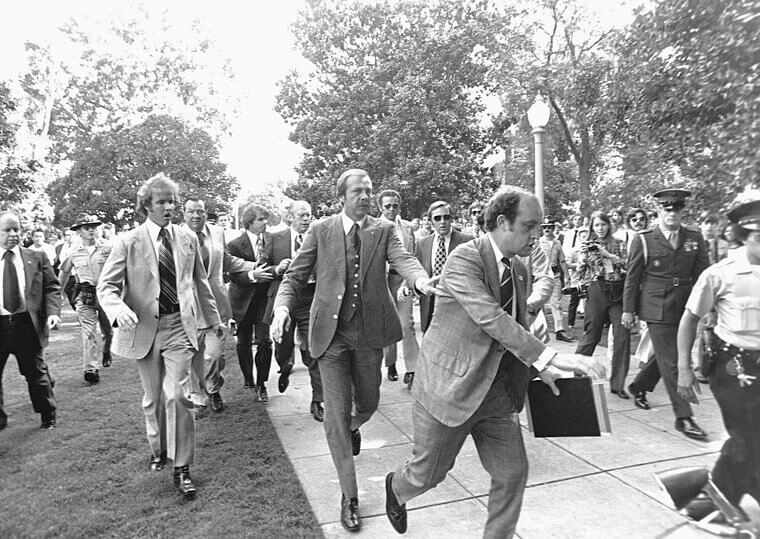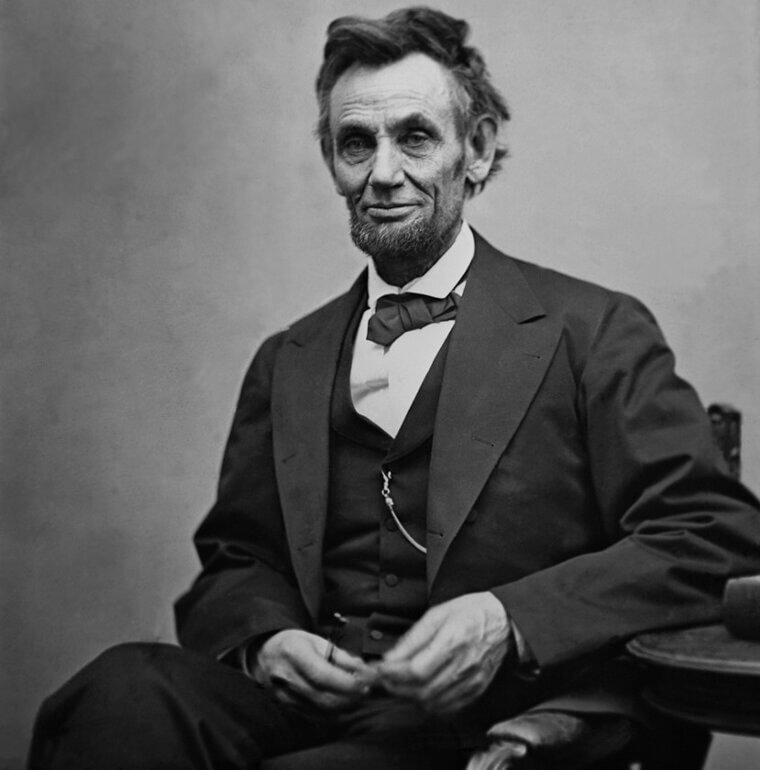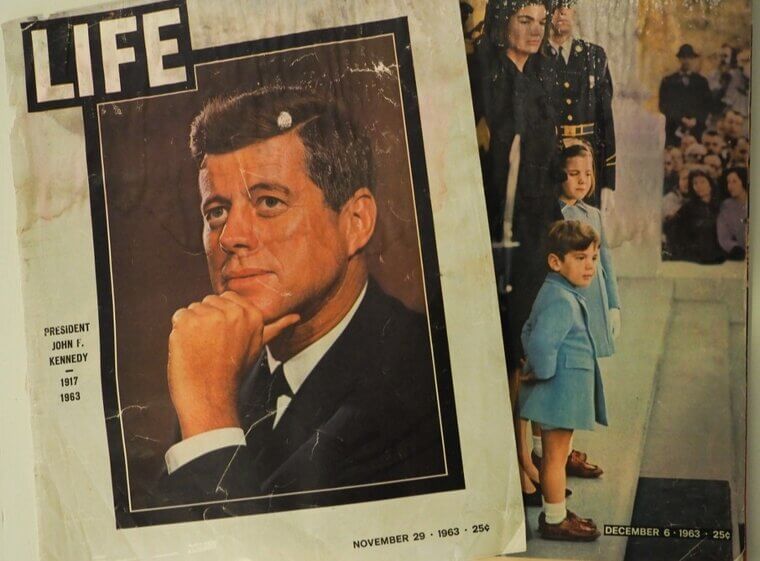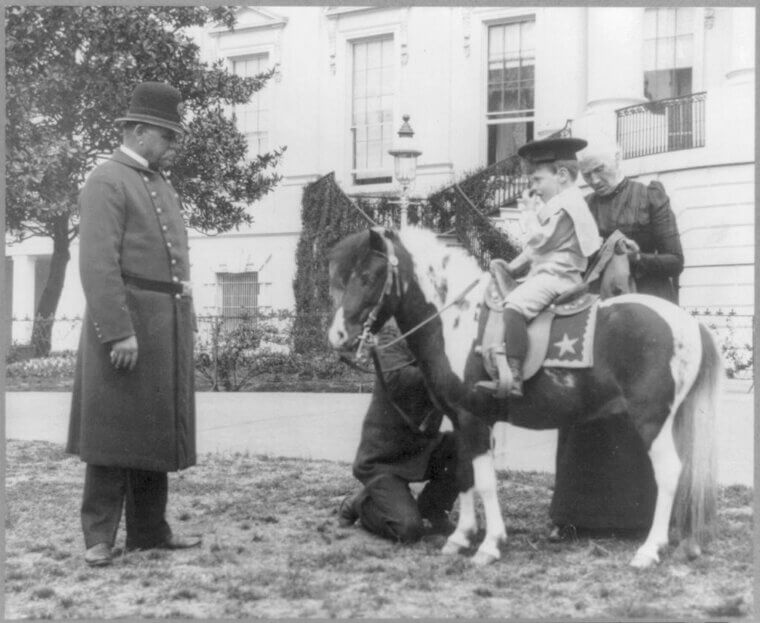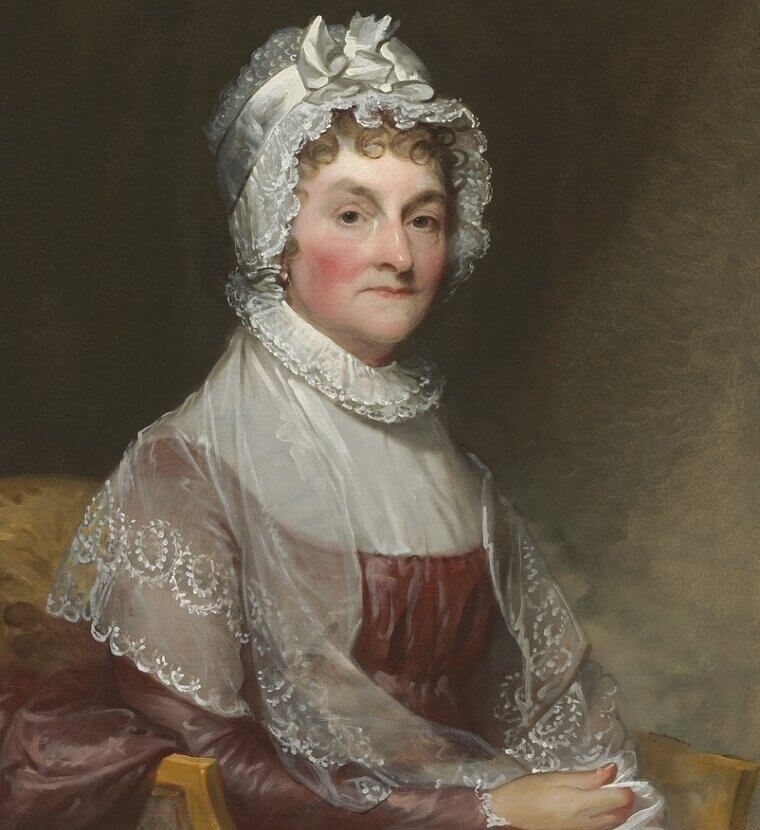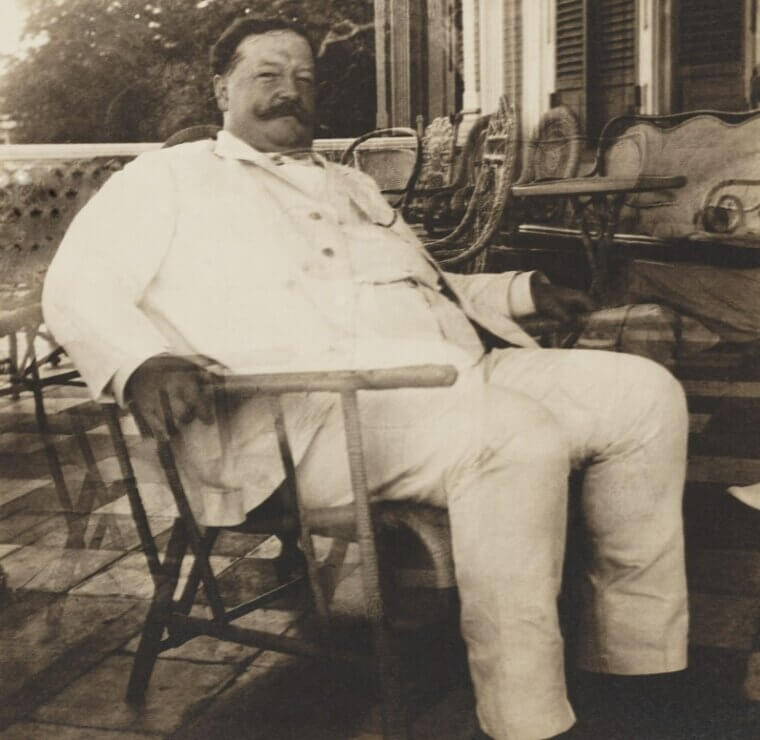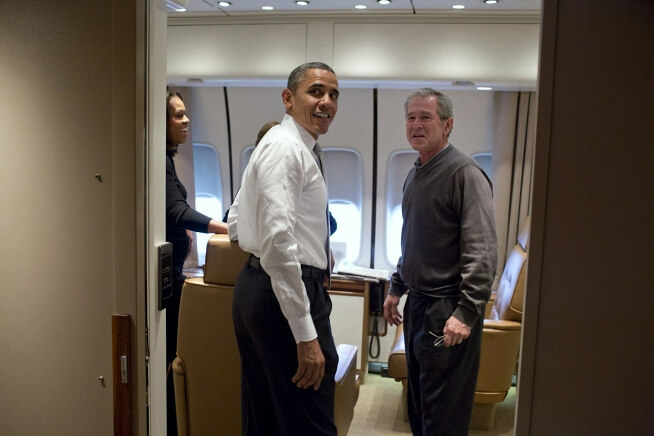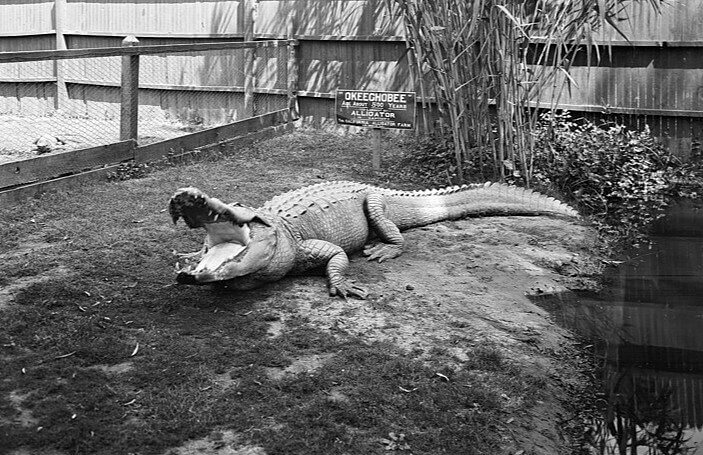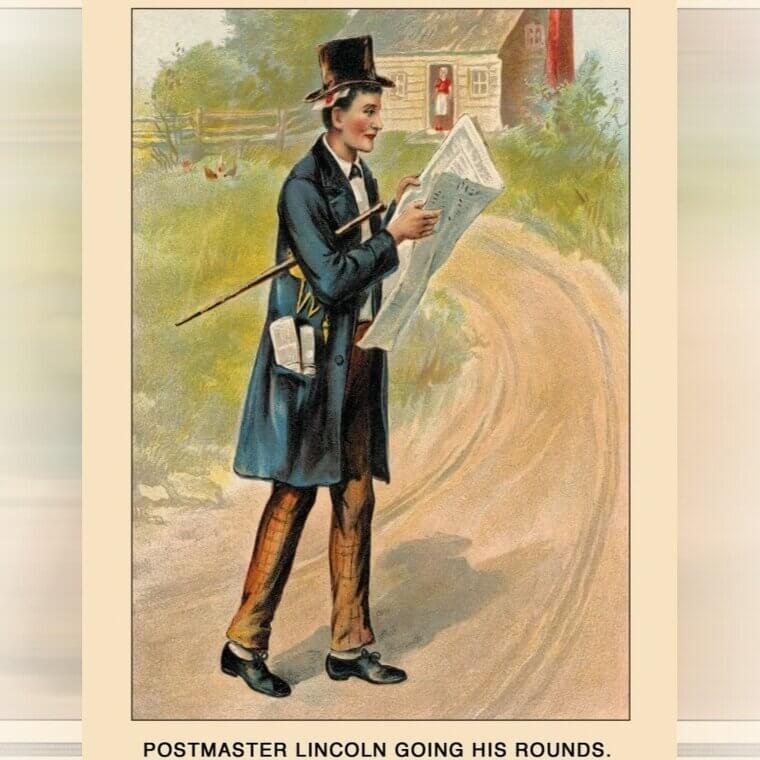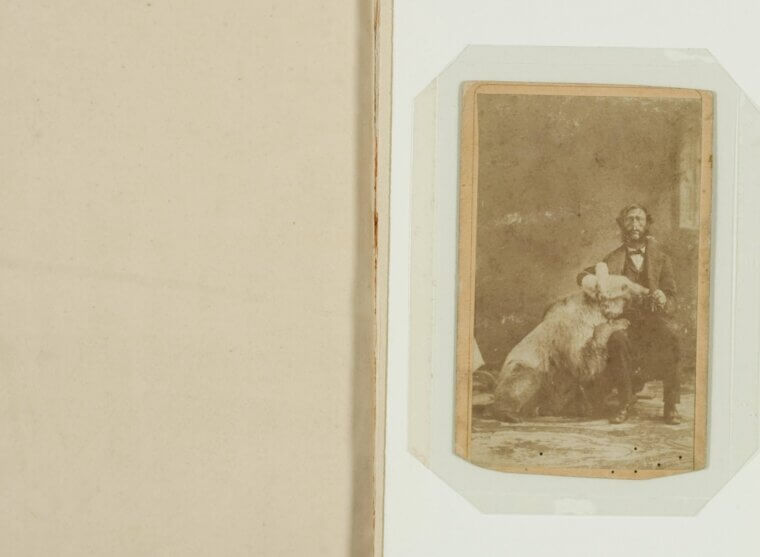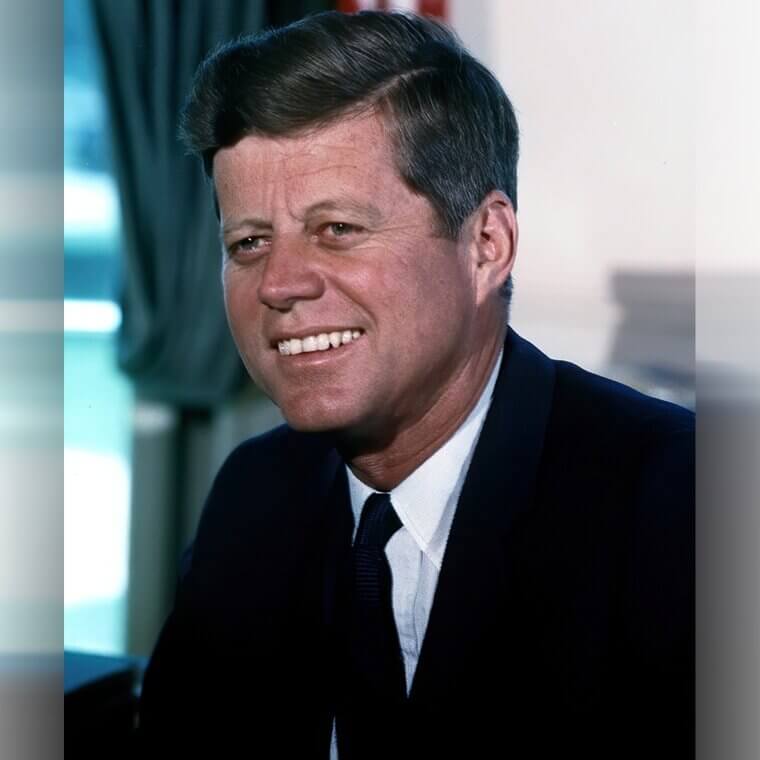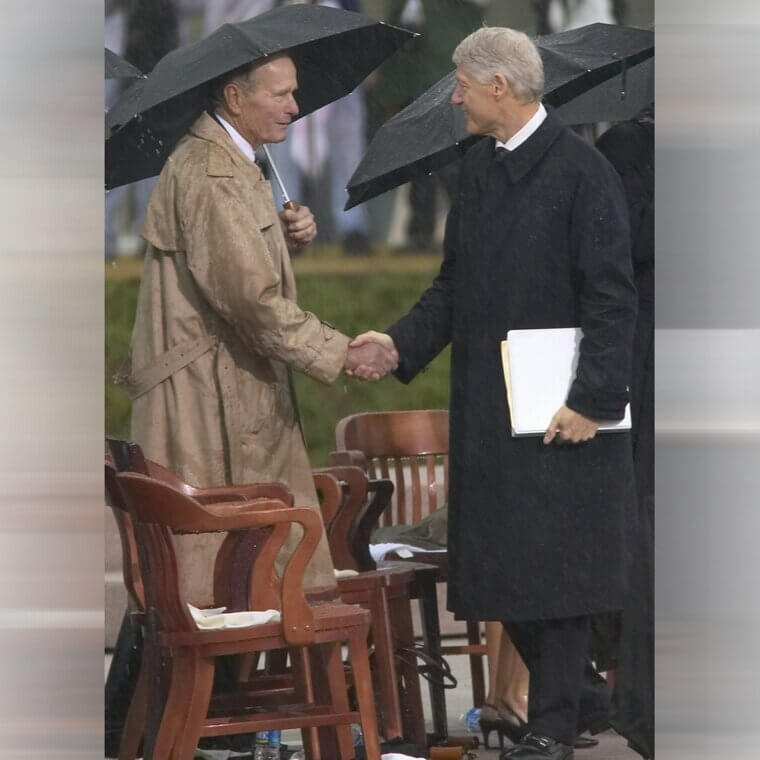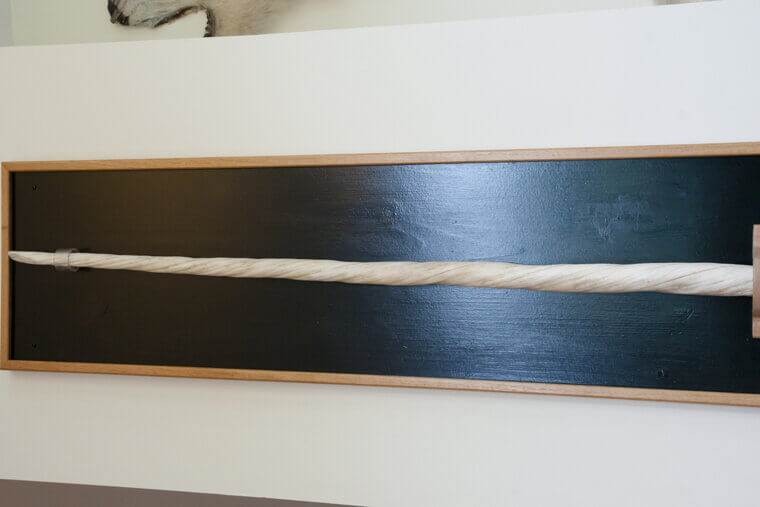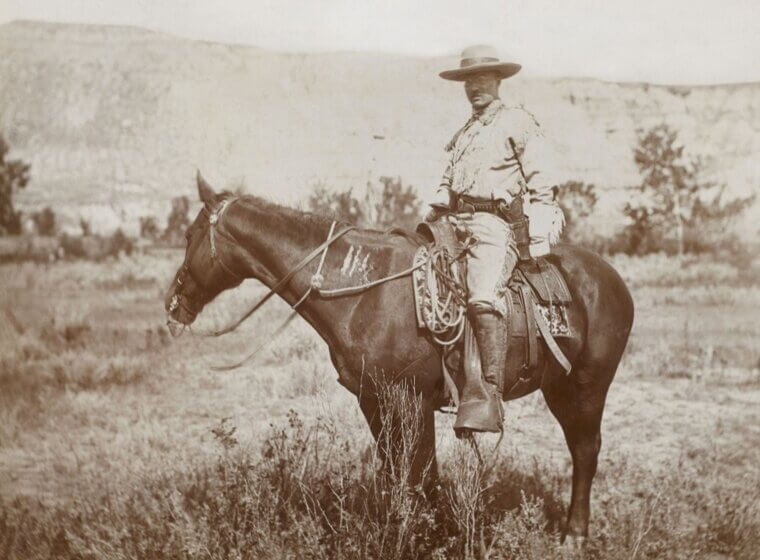Before Becoming President, Jimmy Carter Worked as a Peanut Farmer
Before entering politics, Jimmy Carter was deeply involved in his family's peanut farming business in Plains, Georgia. After graduating from the U.S. Naval Academy and serving as a naval officer, Carter returned home following his father’s death in 1953 to take over the struggling family farm. He modernized operations, turning it into a successful business despite early financial hardships. His experience as a farmer shaped his political image as a hardworking, humble leader who understood rural America.
Even during his presidency, his connection to peanut farming remained so strong that his campaign buttons featured peanuts, and he famously joked about being just a simple “peanut farmer” from Georgia.
John Quincy Adams Loved Skinny-Dipping in the Potomac River Every Morning
John Quincy Adams had an unusual morning routine—he loved to go skinny-dipping in the Potomac River. Nearly every morning during his presidency (1825–1829), Adams would wake up before dawn and take a refreshing nude swim in the river. He believed it was good for his health and even reportedly swam for up to an hour at a time. His habit became so well known that one determined female journalist, Anne Royall, supposedly used it to her advantage...
She sat on his clothes on the riverbank and refused to return them until he granted her an interview, making her one of the first women to interview a sitting U.S. president.
Calvin Coolidge Had a Pet Raccoon
Calvin Coolidge, the 30th president of the United States, had one of the most unusual White House pets—a raccoon named Rebecca. Originally sent to the Coolidges as a gift for Thanksgiving dinner in 1926 (intended to be eaten), the president and First Lady Grace Coolidge instead adopted her as a pet. Rebecca quickly became a beloved member of the household, often seen roaming the White House, playing in the bathtub, or walking on a leash.
Coolidge even had a custom-built outdoor house for her. The Coolidges were known for their love of animals, and Rebecca was just one of many unique pets they kept, including a bobcat, a pygmy hippo, and several dogs.
Thomas Jefferson Invented the First Swivel Chair
Thomas Jefferson was not only a Founding Father and the third president of the United States, but also an inventive mind who is credited with creating one of the most practical pieces of office furniture—the swivel chair. While drafting the Declaration of Independence in 1776, Jefferson modified an existing Windsor chair by adding a central iron spindle, allowing the seat to rotate. This early version of the swivel chair is believed to have been used while he worked on the historic document.
Jefferson’s inventive nature didn’t stop there—he also designed gadgets like a revolving bookstand, a polygraph for copying letters, and an improved plow, showcasing his lifelong curiosity and ingenuity.
Herbert Hoover and His Wife Spoke Fluent Mandarin - Often Using It to Communicate Secretly in the White House
Herbert Hoover and his wife, Lou Henry Hoover, had a unique skill that set them apart from other presidential couples—they both spoke fluent Mandarin Chinese. During their early years of marriage, the Hoovers lived in China while Herbert worked as a mining engineer. To adapt, they learned Mandarin and became proficient enough to hold entire conversations. As president and first lady, they often used Mandarin to speak privately in the White House, especially when they didn’t want staff or visitors to understand their discussions.
Their linguistic skills made them the only presidential couple in U.S. history known to be fluent in Chinese—a rare and fascinating distinction in American political history.
Woodrow Wilson Kept Sheep on the White House Lawn
During World War I, Woodrow Wilson found a creative way to support the war effort—by keeping a flock of sheep on the White House lawn. In 1918, instead of hiring groundskeepers to mow the grass, Wilson allowed the sheep to graze freely, both as a cost-saving measure and as a symbolic gesture of wartime conservation. The flock, which grew to around 48 sheep, even included an award-winning ram named Old Ike, known for his bad temper and love of chewing tobacco.
The wool sheared from the sheep was auctioned off to raise money for the Red Cross, bringing in thousands of dollars to aid in war relief efforts.
Before He Was President, Andrew Johnson Was a Tailor
Before becoming the 17th president of the United States, Andrew Johnson made his living as a tailor. Born into poverty, he was apprenticed to a tailor at a young age but ran away as a teenager, eventually settling in Greeneville, Tennessee. There, he opened his own tailor shop, where he personally stitched and repaired suits for local residents. Johnson’s tailoring skills were so well known that even as he entered politics, he proudly claimed he could still sew a fine coat.
His background as a self-made man shaped his populist political style, and even as president, he reportedly boasted that he could outwork any professional tailor in Washington.
Benjamin Harrison Was the First President to Live in the White House With Electricity - But He Refused To Touch Light Swtiches
Benjamin Harrison, the 23rd president of the United States, was the first to have electricity installed in the White House—but he was so afraid of being electrocuted that he refused to touch the light switches himself. In 1891, the Edison General Electric Company wired the White House, introducing a modern convenience that many Americans had yet to experience. However, Harrison and his wife, Caroline, were deeply wary of the new technology, believing it was dangerous.
As a result, they often left the lights on overnight rather than risk turning them off. Instead, White House staff were responsible for operating the switches, making sure the president was never forced to face his fear of electric shock.
Lyndon B. Johnson Conducted Meetings From the Bathroom
Lyndon B. Johnson was known for his larger-than-life personality and unconventional leadership style—including his habit of conducting meetings from the bathroom. As president, Johnson had no qualms about continuing conversations while using the toilet, often leaving the door open and expecting aides, staff, and even fellow politicians to keep talking as if nothing unusual was happening. This was part of his infamous "Johnson Treatment," an intense, in-your-face style of persuasion designed to dominate conversations and make others uncomfortable enough to bend to his will.
Whether sitting on the toilet, showering, or getting dressed, Johnson believed that every moment was an opportunity for political discussion. His approach left many stunned—but also proved effective.
Andrew Jackson Taught His Parrot to Swear - Eventually Causing Its Removal From the Former President’s Funeral
Andrew Jackson, the fiery seventh president of the United States, had a pet parrot named Poll with a rather colorful vocabulary. Known for his hot temper and rough language, Jackson reportedly taught his beloved parrot to swear—perhaps a little too well. The bird became so proficient in cursing that, during Jackson’s funeral in 1845, Poll began loudly squawking expletives in front of mourners. The outburst was so disruptive that the foul-mouthed parrot had to be removed from the service.
The incident was both amusing and fitting for a president known for his tough, no-nonsense demeanor, making Poll one of the most infamous pets in White House history.
George Washington’s Teeth Weren’t Wooden - They Were Made of Human Teeth, Animal Teeth, and Ivory
The popular myth that George Washington had wooden teeth isn’t true, but the reality might be even more surprising. Washington’s dentures were made from a mix of human teeth (some likely purchased from enslaved people), animal teeth, ivory, and even metal such as lead and gold. The first president suffered from terrible dental problems throughout his life, losing most of his natural teeth by the time he took office. His dentures were uncomfortable, affecting both his speech and facial appearance, which is why he often looked stern in portraits.
Despite his struggles, Washington maintained his leadership with dignity—though he reportedly relied on a special dental adhesive to keep his false teeth in place.
Before Being President Ford, Gerald Ford Was an Athlete and a Model
Before becoming the 38th president of the United States, Gerald Ford was both a standout athlete and a part-time model. Ford was a star football player at the University of Michigan, where he played center and linebacker, helping lead the team to two national championships in 1932 and 1933. His skills were so impressive that he received offers from both the Detroit Lions and Green Bay Packers, but he chose to attend Yale Law School instead.
To help pay for school, Ford took on modeling jobs, even appearing on the cover of Cosmopolitan in 1942 with his then-girlfriend. His combination of athleticism and charm made him one of the most physically fit presidents in U.S. history.
Eleanor Roosevelt, Queen Wilhelmina of the Netherlands, and Winston Churchill All Reported To See Abraham Lincoln’s Ghost While Visiting the White House
The ghost of Abraham Lincoln is one of the most famous White House legends, with several notable figures claiming to have seen or felt his presence. Eleanor Roosevelt, who often worked late in the Lincoln Bedroom, reported sensing his spirit nearby. Queen Wilhelmina of the Netherlands had one of the most startling encounters—while staying at the White House, she allegedly heard a knock on her bedroom door, opened it, and saw Lincoln’s ghost standing in the hallway, causing her to faint.
Winston Churchill, known for his skepticism, also had a chilling experience—after taking a bath, he walked into his room, naked and cigar in hand, only to see Lincoln’s ghost by the fireplace. Ever quick-witted, Churchill reportedly said, “Good evening, Mr. President. You seem to have me at a disadvantage.”
Before They Became Political Adversaries, JFK and Nixon Were Best Friends
Before they became political rivals in the 1960 presidential election, John F. Kennedy and Richard Nixon were actually close friends. The two first met in the 1940s when they were both young congressmen, sharing similar experiences as World War II veterans and rising political stars. They even traveled together on official trips, with Kennedy once joking that Nixon was "the only guy who can keep up with me."
Their friendship extended beyond politics—when Nixon's wife, Pat, was expecting their first child, Kennedy sent a personal note wishing them well. However, as they climbed the political ladder, their relationship became strained, culminating in one of the closest and most hard-fought elections in U.S. history.
Theodore Roosevelt Was Shot During a Speech—And Kept Speaking
Theodore Roosevelt proved his toughness in dramatic fashion during a 1912 campaign speech when he was shot in the chest—but refused to stop speaking. A would-be assassin, John Schrank, fired a .38-caliber bullet at Roosevelt in Milwaukee, Wisconsin. Luckily, the bullet was slowed by the folded 50-page speech in Roosevelt’s breast pocket and his eyeglass case, preventing a fatal wound. Bleeding but undeterred, Roosevelt assured the crowd, “It takes more than that to kill a Bull Moose."
He proceeded to speak for over 80 minutes before seeking medical attention. Doctors later decided to leave the bullet lodged in his chest, where it remained for the rest of his life.
In 1969, Before Becoming President, Jimmy Carter Reported Seeing a UFO in Georgia
In 1969, years before becoming the 39th president of the United States, Jimmy Carter claimed to have seen a UFO. While in Leary, Georgia, Carter and several others witnessed a bright, unidentified object in the sky that changed colors and moved erratically. Describing it as "the darndest thing I’ve ever seen," Carter later filed an official report with the International UFO Bureau in 1973. Though he never claimed it was extraterrestrial, Carter remained fascinated by the sighting.
As president, he even promised to release all U.S. government UFO information but later backed down, citing national security concerns. His sighting remains one of the most well-documented UFO reports by a future U.S. president.
Franklin D. Roosevelt, Harry Truman, Gerald Ford, Ronald Reagan, Donald Trump, and George W. Bush All Survived Assassination Attempts
Several U.S. presidents have survived assassination attempts, narrowly escaping history-changing moments. Franklin D. Roosevelt was targeted in 1933 before taking office when a gunman fired at him in Miami, missing but killing Chicago’s mayor. Harry Truman faced an attack in 1950 when Puerto Rican nationalists stormed Blair House, leading to a deadly shootout. Gerald Ford survived two separate 1975 attempts—one by Charles Manson follower Lynette “Squeaky” Fromme and another by Sara Jane Moore. Ronald Reagan was shot in 1981 by John Hinckley Jr. but miraculously recovered.
George W. Bush avoided harm in 2005 when a grenade was thrown at him in Georgia but failed to detonate. Each of these incidents could have changed history forever.
Shortly Before His Assassination, Lincoln Dreamed About Walking Into His Own Funeral
In the weeks leading up to his assassination, Abraham Lincoln reportedly had a chilling dream in which he saw his own funeral. According to accounts from his close friends and aides, including his wife, Mary Todd Lincoln, the president shared a disturbing vision: He was wandering the White House and came upon a casket surrounded by mourners. When he asked who had died, a soldier in the dream responded, “The President—he was killed by an assassin.”
Lincoln was known for having vivid dreams and believed they sometimes held prophetic meaning. Just days later, on April 14, 1865, he was shot by John Wilkes Booth at Ford’s Theatre, making the eerie premonition a haunting piece of history.
Though JFK Appeared Young and Healthy, He Secretly Struggled With Addison’s Disease and Chronic Pain
Despite his youthful and energetic public image, John F. Kennedy secretly battled severe health problems throughout his life. He suffered from chronic back pain, digestive issues, and Addison’s disease—a rare condition that affects the adrenal glands and causes extreme fatigue, weakness, and weight loss. His back problems were so severe that he had multiple surgeries and often relied on a back brace, which he was wearing when he was assassinated in 1963.
To manage his pain and symptoms, Kennedy took a cocktail of medications, including steroids, painkillers, and stimulants, which were carefully hidden from the public. His ability to project strength and charisma, despite these serious ailments, remains one of the most remarkable aspects of his presidency.
Theodore Roosevelt’s Children Once Snuck a Horse Into the White House Elevator To Visit Their Father
Theodore Roosevelt’s children were famously mischievous, and one of their most legendary pranks involved sneaking a horse into the White House. The Roosevelt family owned a beloved Shetland pony named Algonquin, which was usually kept outside. However, when their brother Archie fell ill, his siblings decided to cheer him up by bringing Algonquin to his room. The problem? Archie’s room was on an upper floor. Undeterred, Roosevelt’s children led the pony into the White House elevator, much to the shock of staff.
The stunt was a testament to the free-spirited and playful nature of the Roosevelt household, which was often filled with animals—including a badger, a parrot, and even a pet hyena!
The Ghost of Abigail Adams, Wife of John Adams, Is Often Seen in the East Room
The ghost of Abigail Adams, wife of John Adams, is one of the most frequently reported spirits in the White House. When the Adams family moved in as its first residents in 1800, the White House was still unfinished, cold, and damp. Abigail took to using the East Room to hang laundry because it was one of the warmest and driest spaces. According to legend, her spirit never left. Staff and visitors have claimed to see a ghostly figure dressed in 19th-century clothing, sometimes appearing to be carrying linens.
Others have reported smelling the faint scent of soap or laundry. Some say her apparition glides through hallways toward the East Room before mysteriously vanishing.
William Howard Taft Got Stuck in a White House Bathtub
William Howard Taft, the 27th president of the United States, was famously large—standing 5 feet 11 inches tall and weighing over 300 pounds. His size led to one of the most enduring presidential legends: that he once got stuck in a White House bathtub. While there’s no definitive proof of the incident, reports suggest that Taft struggled with standard bathtubs, prompting the installation of an extra-large custom tub that could comfortably fit four men.
The oversized tub was photographed before installation, further fueling the story. Whether or not he actually got stuck, Taft’s size became a defining part of his public image, though he later slimmed down significantly after his presidency.
Barack Obama and George W. Bush Have Become Friends
Despite their political differences, Barack Obama and George W. Bush have developed a warm friendship over the years. While they rarely interacted during Obama’s presidency, their bond grew stronger after they both left office. Bush has spoken highly of Obama’s character, and Obama has praised Bush’s kindness and humor. Their friendship was on full display at public events, including the funerals of John McCain and George H.W. Bush, where they shared lighthearted moments.
One of the most memorable instances was in 2016 when Bush passed Michelle Obama a cough drop during a ceremony—a small but touching gesture that symbolized the camaraderie between the two families.
France Once Gifted John Quincy Adams With an Alligator
John Quincy Adams received one of the strangest diplomatic gifts in presidential history—an alligator. The unusual present was given to him by the Marquis de Lafayette, the French aristocrat and Revolutionary War hero, during a visit to the U.S. While the exact reason behind the gift remains unclear, Adams, known for his eccentricities, decided to keep the reptile rather than rehome it. He housed the alligator in a White House bathroom, delighting in using it to startle unsuspecting guests.
The alligator reportedly lived in the White House for several months before being relocated, making it one of the most bizarre animals ever to roam the executive mansion.
Abraham Lincoln Was a Mailman Before Becoming President
Before he became the 16th president of the United States, Abraham Lincoln worked as a postmaster in the small town of New Salem, Illinois. Appointed in 1833 at just 24 years old, Lincoln took his job seriously, personally delivering mail—even carrying letters in his hat for easy access. His tenure as postmaster was short-lived, ending in 1836 when the post office closed, but it showcased his commitment to public service.
Interestingly, when the government later demanded repayment of outstanding funds from the defunct post office, Lincoln, despite financial struggles, insisted on repaying every penny himself—an early sign of the honesty and integrity that would define his presidency.
A Native American Community Gifted Thomas Jefferson Two Grizzly Bear Cubs Who Lived at the White House
In 1807, President Thomas Jefferson received an unusual gift from explorer Zebulon Pike—a pair of live grizzly bear cubs. The bears were a gift from a Native American community in present-day Colorado, sent to Jefferson as a token of goodwill. However, Jefferson quickly realized that grizzlies were far from ordinary pets. Describing them as "too dangerous and troublesome for me to keep," he housed them temporarily in a White House enclosure, where they became a spectacle for visitors.
Eventually, he sent them to a museum in Philadelphia, but their time at the White House remains one of the strangest instances of exotic animals residing at 1600 Pennsylvania Avenue.
JFK’s Assassination and the Thousands of Missing Files
The assassination of John F. Kennedy on November 22, 1963, remains one of the most scrutinized events in American history, partly due to the thousands of government files that remain classified or have gone missing. While the official Warren Commission concluded that Lee Harvey Oswald acted alone, many believe key evidence was withheld, fueling decades of conspiracy theories. In 1992, Congress passed the JFK Records Act, requiring the release of all related documents, but thousands of pages were still withheld for “national security” reasons.
Some missing records include CIA and FBI files on Oswald’s movements before the assassination. The secrecy has only deepened public suspicion, making JFK’s assassination one of history’s most enduring mysteries.
Bill Clinton and George H. W. Bush Are Close Friends
Despite being from different political parties and once facing off in a heated 1992 presidential election, Bill Clinton and George H.W. Bush developed an unexpectedly close friendship. Their bond began in the early 2000s when they worked together on humanitarian efforts, including disaster relief for victims of the 2004 Indian Ocean tsunami and Hurricane Katrina. Bush even came to see Clinton as a “surrogate son,” jokingly calling him his “brother from another mother.”
Clinton, in turn, admired Bush’s kindness and leadership, often referring to him as a mentor. Their unlikely friendship became a model of bipartisan respect, proving that political rivals could put differences aside for the greater good.
Queen Elizabeth Gifted a Narwhal Tusk to President Lyndon B. Johnson
In 1967, Queen Elizabeth II gave President Lyndon B. Johnson a truly unique and regal gift—a narwhal tusk. Often called the "unicorn of the sea," narwhals are Arctic whales known for their long, spiraled tusks. The gift, which measured over seven feet long, was presented as a diplomatic token of goodwill from Canada, a member of the British Commonwealth. Johnson, known for his love of bold and unusual decor, reportedly displayed the tusk in the Oval Office.
While it may have seemed like an odd presidential gift, the tusk symbolized the enduring alliance between the United States and the United Kingdom—and remains one of the most peculiar White House artifacts.
Theodore Roosevelt Was a Cattle Rancher
Before he became the 26th president of the United States, Theodore Roosevelt spent time as a cattle rancher in the rugged Badlands of North Dakota. Following the deaths of his mother and first wife on the same day in 1884, a grief-stricken Roosevelt left New York and invested in two ranches, hoping to build a life as a cowboy. He embraced the frontier lifestyle, rounding up cattle, hunting, and even chasing outlaws.
Though harsh winters eventually wiped out much of his herd, the experience toughened him and deepened his appreciation for conservation and the American West. His time as a rancher played a key role in shaping his later policies on land preservation and national parks.
